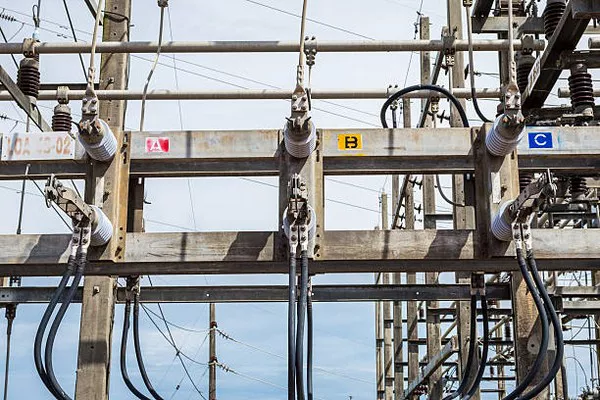Transformers are fundamental components in the field of electronics and electrical engineering. They play a crucial role in voltage conversion, impedance matching, and isolating circuits. Transformers are found in various electronic devices and power distribution systems, making them indispensable in modern technology. This article aims to provide a comprehensive understanding of what transformers are, how they work, and their applications in electronics.
See Also: Where Can I Find Electric Transformers? A Comprehensive Guide
What is a Transformer?
A transformer is an electrical device that transfers electrical energy from one circuit to another through electromagnetic induction. It consists of two coils, known as the primary and secondary winding, wrapped around a magnetic core. The primary winding is connected to the input voltage source, while the secondary winding is connected to the load. Transformers are passive devices, which means they do not have any active components like transistors or diodes. Instead, they rely on the principles of electromagnetic induction to perform their function.
How Transformers Work
The operation of a transformer is based on Faraday’s law of electromagnetic induction and the principle of mutual inductance. When an alternating current (AC) flows through the primary winding, it generates a magnetic field around the coil. This magnetic field extends into the core and induces a voltage in the secondary winding, which is proportional to the rate of change of magnetic flux. The core material enhances this magnetic coupling between the primary and secondary windings.
The key factors that determine the transformation ratio between the primary and secondary voltages are the number of turns in each winding and the magnetic properties of the core material. If the secondary winding has more turns than the primary winding, the transformer is called a step-up transformer, and it increases the voltage. Conversely, if the secondary winding has fewer turns, it is a step-down transformer, which reduces the voltage.
Transformer Components
Core: The core of a transformer is typically made of laminated iron or other magnetic materials. Its primary purpose is to provide a path for the magnetic flux generated by the primary winding. The choice of core material influences the transformer’s efficiency, frequency response, and saturation characteristics.
Primary Winding: The primary winding is connected to the input voltage source and carries the alternating current that creates the magnetic field in the core. The number of turns in the primary winding determines the transformer’s primary-to-secondary turns ratio.
Secondary Winding: The secondary winding is connected to the load and is where the induced voltage appears. The number of turns in the secondary winding defines the transformation ratio and, consequently, the output voltage.
Windings Insulation: To prevent electrical leakage and ensure safety, the windings are insulated from each other and from the core. This insulation is usually made of materials such as paper, Mylar, or varnish.
Transformer Types
Transformers come in various types, each designed for specific applications:
Power Transformers: These are used in power distribution systems to step up voltage for long-distance transmission and step down voltage for safe use in homes and businesses. They are essential for maintaining the efficiency and safety of electrical grids.
Distribution Transformers: Distribution transformers are commonly found on utility poles and convert high-voltage electricity from power lines to lower-voltage levels suitable for residential and commercial use.
Isolation Transformers: These transformers provide electrical isolation between the primary and secondary circuits. They are often used in sensitive electronic equipment to protect against ground loops and electrical noise.
Autotransformers: Autotransformers have a single winding with a tap, allowing them to function as both step-up and step-down transformers. They are used in applications where a small voltage adjustment is required.
Instrument Transformers: These transformers, including current transformers and voltage transformers, are used in measurement and protection applications. They scale down high currents and voltages to levels suitable for measurement and control devices.
Audio Transformers: Audio transformers are crucial in audio equipment, such as amplifiers and mixers, for impedance matching and signal isolation. They help maintain high-quality sound reproduction.
Applications of Transformers in Electronics
Transformers are integral components in various electronic devices and systems. Some common applications include:
Power Supplies: Transformers are used in power supplies to convert high-voltage AC from the mains to lower-voltage AC or DC suitable for electronic circuits. They also provide galvanic isolation to ensure safety.
Amplifiers: Audio amplifiers often use transformers for impedance matching and signal coupling between stages. This enhances the fidelity of audio signals.
Electronic Ballasts: In fluorescent and HID (high-intensity discharge) lighting systems, transformers are employed as electronic ballasts to regulate current and voltage, ensuring stable and efficient illumination.
Communication Systems: Transformers are used in telecommunications equipment to match impedance between transmission lines and electronic devices, optimizing signal transmission.
Electronic Filters: Transformers are a key component in electronic filters, such as the bandpass and bandstop filters, which are used in various communication and signal processing applications.
Voltage Regulation: Transformers can be used to provide voltage regulation and stability in electronic circuits, ensuring that sensitive components receive a consistent supply voltage.
Conclusion
Transformers are indispensable components in the world of electronics and electrical engineering. Their ability to efficiently transfer electrical energy between circuits, coupled with their versatility and reliability, makes them essential in numerous applications. Whether in power distribution, audio equipment, or communication systems, transformers play a pivotal role in enabling the functionality and performance of modern electronic devices and systems. Understanding the principles and types of transformers is crucial for engineers and enthusiasts alike, as it opens the door to harnessing the full potential of these remarkable devices.

